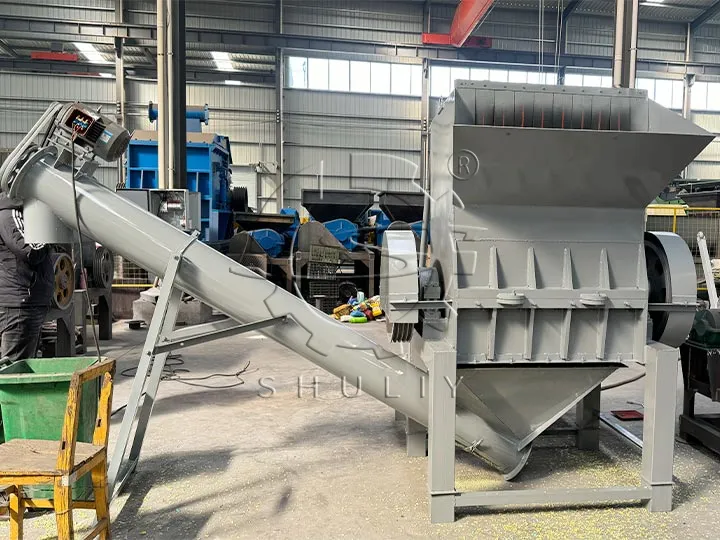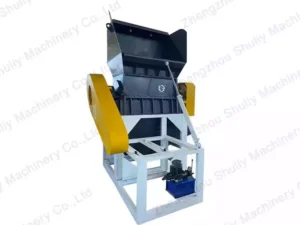Wet vs. Dry Granulation: When and Why You Need a Water Injection Plastic Granulator
In plastic recycling, the granulation or crushing stage is a universal necessity. However, the method used—dry or wet—is a critical decision that directly impacts operational efficiency, maintenance costs, and the quality of the final product. While dry granulation is the standard for many materials, understanding the specific applications for plastic crushing with water can solve some of the industry’s most persistent challenges.
This guide will explain the core principles of wet vs. dry granulation, detailing the significant advantages of the wet process and defining exactly when a water injection plastic granulator is not just an option, but a necessity.

The Triple Advantage: Why Introduce Water into the Crushing Process?
The decision to use water is driven by a need to overcome the specific challenges posed by certain types of plastic waste, primarily soft, flexible films. The benefits of wet granulation are threefold:
1. Cooling & Friction Reduction (Preventing Jams)
This is the most critical advantage. The high-speed cutting action inside a granulator generates significant friction and heat.
- The Problem: For materials with a low melting point, like LDPE film, this heat can cause the plastic to become soft, sticky, and melt onto the blades and rotor. This is the primary reason for machine jams when crushing plastic film without jamming seems impossible.
- The Solution: Water acts as a highly effective coolant, continuously cooling the plastic crusher blades and the cutting chamber. This friction reduction in plastic grinding prevents the material from melting, ensuring a clean cut and smooth operation.
2. Pre-Washing & Decontamination
For post-consumer materials, cleanliness is key to value.
- The Problem: Dirty materials, especially agricultural films or post-consumer packaging, carry significant amounts of dirt, sand, and other contaminants.
- The Solution: The wet granulation process acts as an aggressive first-stage wash. The turbulent action inside the chamber, combined with the water, performs a powerful pre-washing during granulation, dislodging and flushing away a large portion of contaminants. This integration of plastic film washing and crushing reduces the load on downstream washing equipment in a plastic film recycling line.
3. Improved Feeding & Dust Suppression
Lightweight materials are notoriously difficult to process efficiently.
- The Problem: Plastic films and PP woven bags are light and have a low bulk density. In a dry process, they can float above the rotor, leading to inefficient cutting and low throughput. The process can also generate significant airborne dust.
- The Solution: Water instantly adds mass to these light materials, improving feed efficiency for plastic film by helping it engage properly with the rotor knives. Furthermore, the wet environment provides excellent dust suppression in plastic crushing, creating a cleaner and safer working environment.
When to Use Wet Granulation: A Material-Specific Decision
The need for wet granulation is almost entirely dependent on the material you are processing.
Wet Granulation is ESSENTIAL for:
- LDPE/LLDPE Films: Agricultural films, packaging films, etc. Their low melting point and tendency to stretch make wet granulation a requirement for stable production.
- PP Woven Bags: The fibers in these bags can also generate significant heat and dust, both of which are mitigated by water.
- Highly Contaminated Materials: When processing dirty post-consumer plastic film, the pre-washing benefit alone makes the wet process highly advantageous.
Dry Granulation is STANDARD for:
- Hard, Rigid Plastics (PET, HDPE, PVC): These materials are brittle and shatter easily. They have a higher melting point and do not exhibit the same wrapping or melting behavior. A standard dry plastic crusher is perfectly sufficient for a hard plastic recycling line.
- Can you wet crush PET bottles? Yes, it is possible and sometimes done for extremely dirty bottles to gain a pre-washing advantage, but it is not a requirement for the crushing process itself.
The Right Tool for the Job: The Water Injection Plastic Granulator
Executing this process effectively requires a machine specifically designed for the task. This is where a purpose-built water injection plastic granulator becomes essential. These machines are engineered with key features:
- Water Inlet Ports: Strategically placed ports to inject a controlled flow of water directly into the cutting chamber.
- Enhanced Sealing: Superior sealing around the bearing housings to prevent water ingress and premature failure.
- Robust Drainage: A well-designed system for managing the slurry discharge from the wet granulator.
Based on operational data, water consumption for wet granulation is typically around 1-2 tons of water per hour for processing 1 ton of plastic film, a figure that can be optimized with a water recycling system.
The choice is clear: while a standard crusher can handle a wide range of materials, a specialized water injection plastic granulator is the definitive solution for transforming challenging, low-value films into a high-quality feedstock ready for the plastic pelletizing machine.

